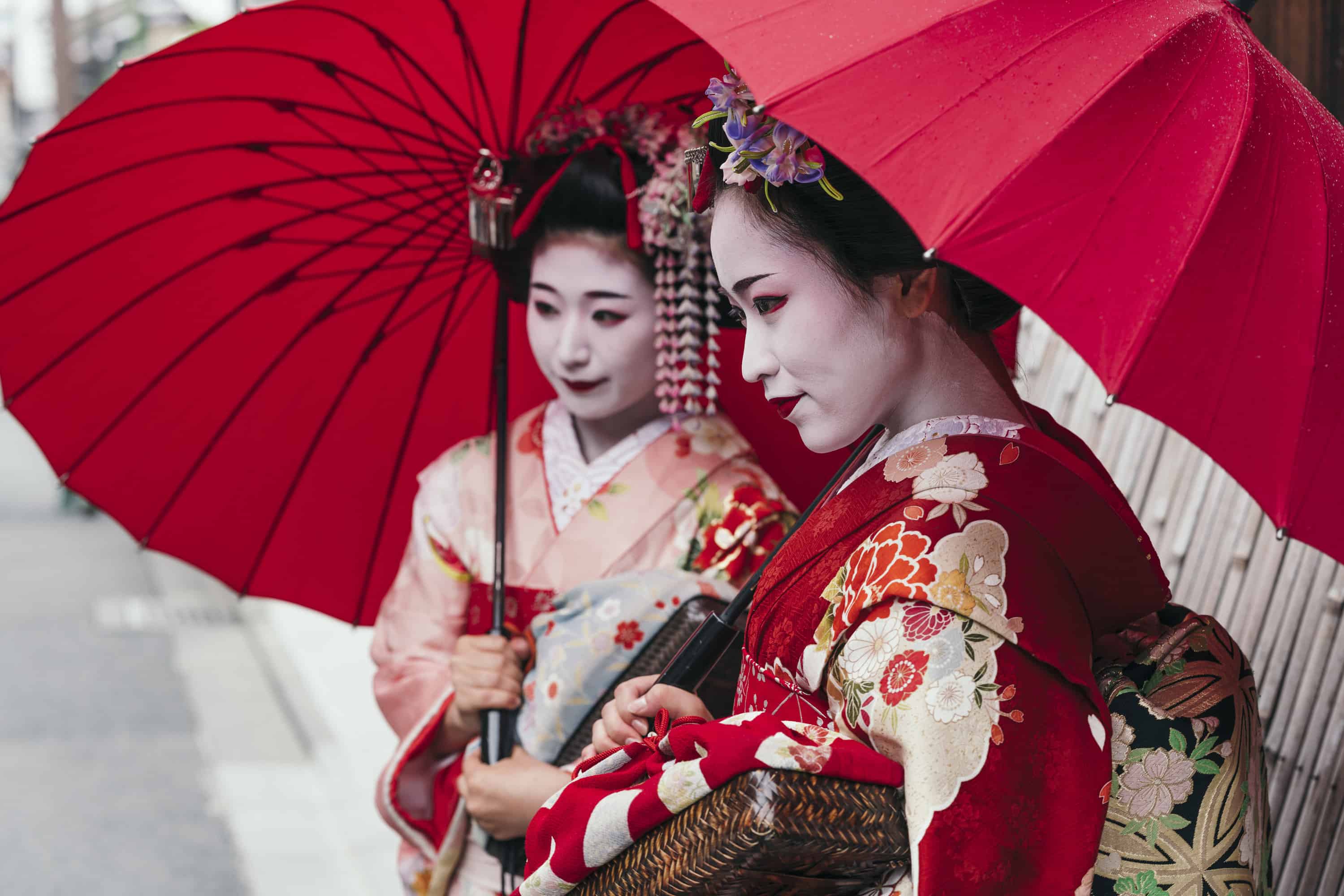GaijinPot, a blog for newcomers to Japan, describes the main difference between Tokyo and Kyoto: “A lot of dreamers go to Tokyo to find success. Others choose Kyoto to live out their dreams.”
And for many young Kyoto women interested in preserving Japanese culture, the dream is to become a geiko — more commonly known as a geisha.
So much so, that on a first visit to Kyoto you’re likely to see geiko and maiko (essentially, geishas in training) walking slowly and gracefully through the streets on tall wooden platform shoes called geta — their hair and makeup flawless, and not a thread out of place on their intricate kimonos. (Don’t gawk or ask for photos when you see geiko and maiko in public. They’re usually on their way to work and prefer not to be interrupted or delayed.) As the above saying goes, geikos are living out their dreams every second of every day.
It’s only natural to ask: Why? In a country as modern as Japan, what’s the allure of such an antiquated profession? The answer lies in first understanding the origins of geisha, and then what the job has evolved to in modern times. Today, the appeal of being a geisha is all about perfecting — and even living as — a work of art in every sense.
Geikos have been around for more than 1,600 years, but the line between the origins and the modern role has many twists and turns. The history involves the role of courtesan for certain periods, entertainer for others, a mix of the two at some times, neither at others, male geishas for a short while, and none of that in any particular order. In other words, a lot can happen over a millennium and a half. And during that time, unrelated events and cultural shifts combined to help the profession evolve into its modern form, which now has about 200 years of tradition behind it — and achieving perfection within its framework is the goal of any geiko.
The Geiko Experience
The best way to describe geikos is that they are highly skilled, hyper-focused hosts and entertainers at teahouses. And experiencing a traditional tea ceremony with geikos is a fascinating experience for anyone visiting Kyoto. It doesn’t come cheap (about $1,000 for two), but the elaborate ceremony, complete with music, traditional dance, food, drink and conversation, forges an unforgettable bond with Japan and its culture. That’s because geikos leave no moment unaccounted for.
To become geikos, women begin training at about age 17 or 18 and spend as long as five years as maiko. One needn’t be Japanese; in fact, a few foreigners have successfully ascended from maiko to geiko — most famously, Australian author Fiona Graham, who has been working under the name Sayuki since 2007. Her performance includes playing the shakuhachi, a Japanese bamboo flute, though most geiko are known for playing the shamisen, a three-string guitar-like instrument.
The performance is, in fact, what’s so special about geiko — because it doesn’t ever really end. It’s in every aspect of their daily lives, not just during tea ceremonies, but before and after, too.
A 24-7 Commitment
A maiko will rise early in the morning at their okiya, essentially a house for trainees, and visit a hairdresser. (A few different hairstyles signify a maiko’s rank in training.) They return home and begin applying their makeup — a laborious, detail-oriented process involving an even, white foundation that’s also applied to the bare skin on the back of the neck; lipstick to define small, dainty lips; and dark pencil to create perfectly symmetrical, arched eyebrows. Then it’s off to a dresser to squeeze into the kimono, which has many tightly fitting pieces and can take up to an hour to don (maikos wear more ornate, decorative kimonos, while geikos have plainer versions along with simpler hairstyles). That leaves a few hours for music or dance practice before the first dinner service at around 6 p.m. — and staying in perfect character and form to and from every activity throughout the day. Tea service can last as late as 2 a.m., depending on the number of reservations that evening.
It can’t be understated: Westerners find the teahouse tradition otherworldly, sometimes even confusing. For some it’s because of deeply ingrained misconceptions, but for most it’s because it’s unlike any immersive cultural experience you can find in a small, intimate setting. From the serving of tea to the music, every moment and movement is planned with precision and executed with unwavering attention to detail. And it’s important to remember that geikos are proud of their intense training and the dedicated service they provide.
Visiting a traditional teahouse is unquestionably authentic and uniquely Japanese — so it should feel different. And the more you can embrace and enjoy the flawless service, the carefully choreographed performances and the friendly-if-limited conversation, the greater your contribution will be to upholding this most pure, honest and precise art form — and its place in Japanese culture.

